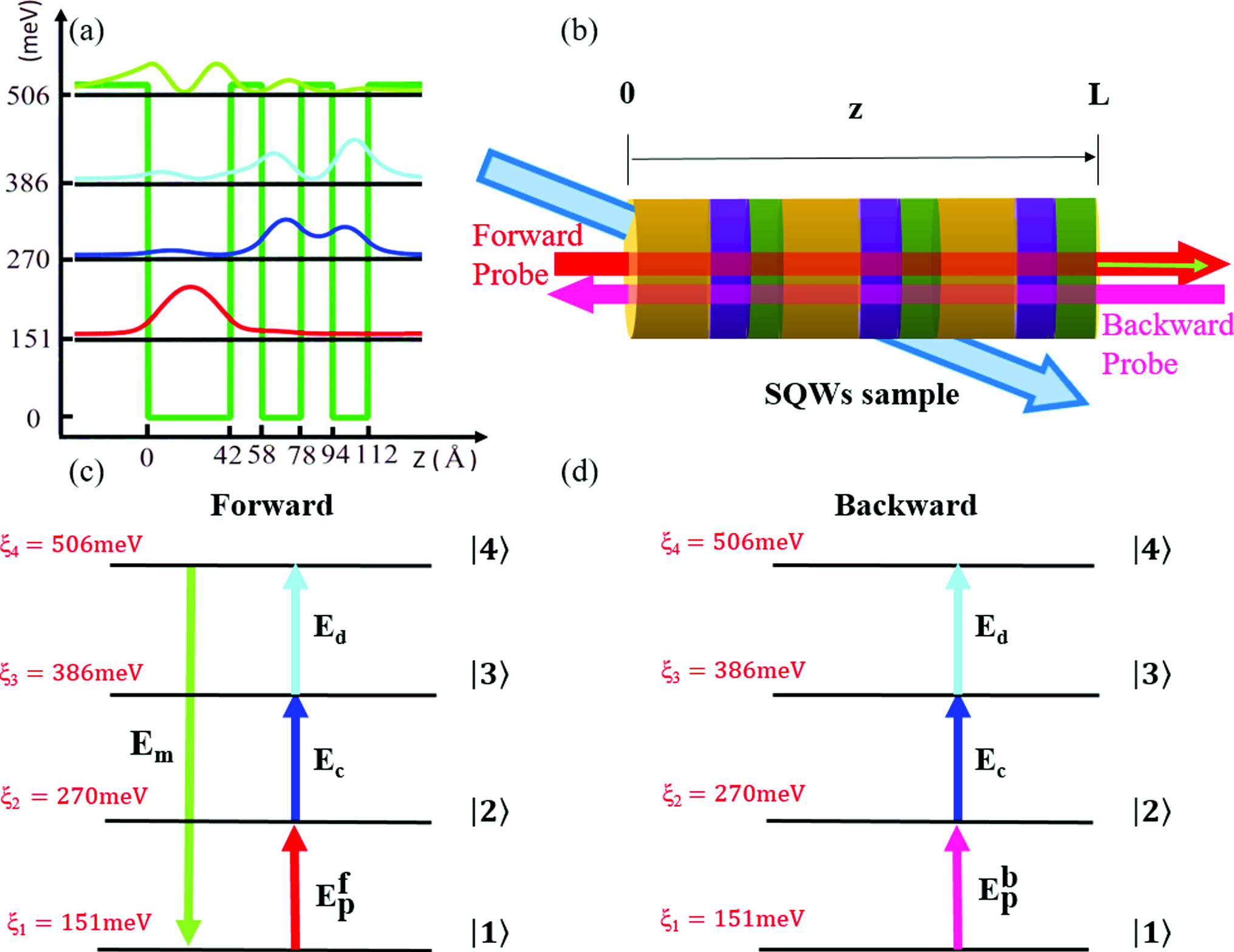https://doi.org/10.1140/epjd/s10053-024-00937-0
Regular Article - Optical Phenomena and Photonics
Highly efficient nonreciprocity and nonreciprocal photonic devices in a semiconductor quantum well
Hubei Key Laboratory of Optical Information and Pattern Recognition, Wuhan Institute of Technology, 430205, Wuhan, Hubei, People’s Republic of China
a
xyhao.321@163.com
b
jin@wit.edu.cn
Received:
29
July
2024
Accepted:
19
November
2024
Published online:
4
December
2024
We propose theoretically a non-magnetic optical nonreciprocity (ONR) scheme with high efficiency by employing the four-wave mixing (FWM) effect in an asymmetric semiconductor three-coupled-quantum-well (TCQW) nanostructure. Nonreciprocal transmission and nonreciprocal phase shift in this TCQW, both with high transmission rates, can be achieved using suitable parameters. Considering an orbital-angular-momentum (OAM) probe beam, the perfect nonreciprocity can be obtained based on the highly efficient FWM. Furthermore, the integration of this TCQW nanostructure into a Mach–Zehnder interferometer enables the fabrication of highly efficient optical isolators and optical circulators by selecting appropriate parameters. The optical isolator exhibits an isolation ratio of 97.76 dB and an insertion loss of 0.25 dB, while the optical circulator demonstrates a fidelity of 0.9993 and a photon survival probability of 0.9517. Our approach based on semiconductor media has the advantages of easy fabrication and good integration with adjustable parameters. In conjunction with the distinctive characteristics of the OAM beam, our protocol offers a theoretical framework for the development of highly integrated and multi-dimensional nonreciprocity and nonreciprocal photonic devices.
Copyright comment Springer Nature or its licensor (e.g. a society or other partner) holds exclusive rights to this article under a publishing agreement with the author(s) or other rightsholder(s); author self-archiving of the accepted manuscript version of this article is solely governed by the terms of such publishing agreement and applicable law.
© The Author(s), under exclusive licence to EDP Sciences, SIF and Springer-Verlag GmbH Germany, part of Springer Nature 2024
Springer Nature or its licensor (e.g. a society or other partner) holds exclusive rights to this article under a publishing agreement with the author(s) or other rightsholder(s); author self-archiving of the accepted manuscript version of this article is solely governed by the terms of such publishing agreement and applicable law.





